site search
online catalog
SCARCE CIVIL WAR ARMY ISSUE BROGAN ALTERED TO A BARRACKS SHOE AT FORT PEMBINA
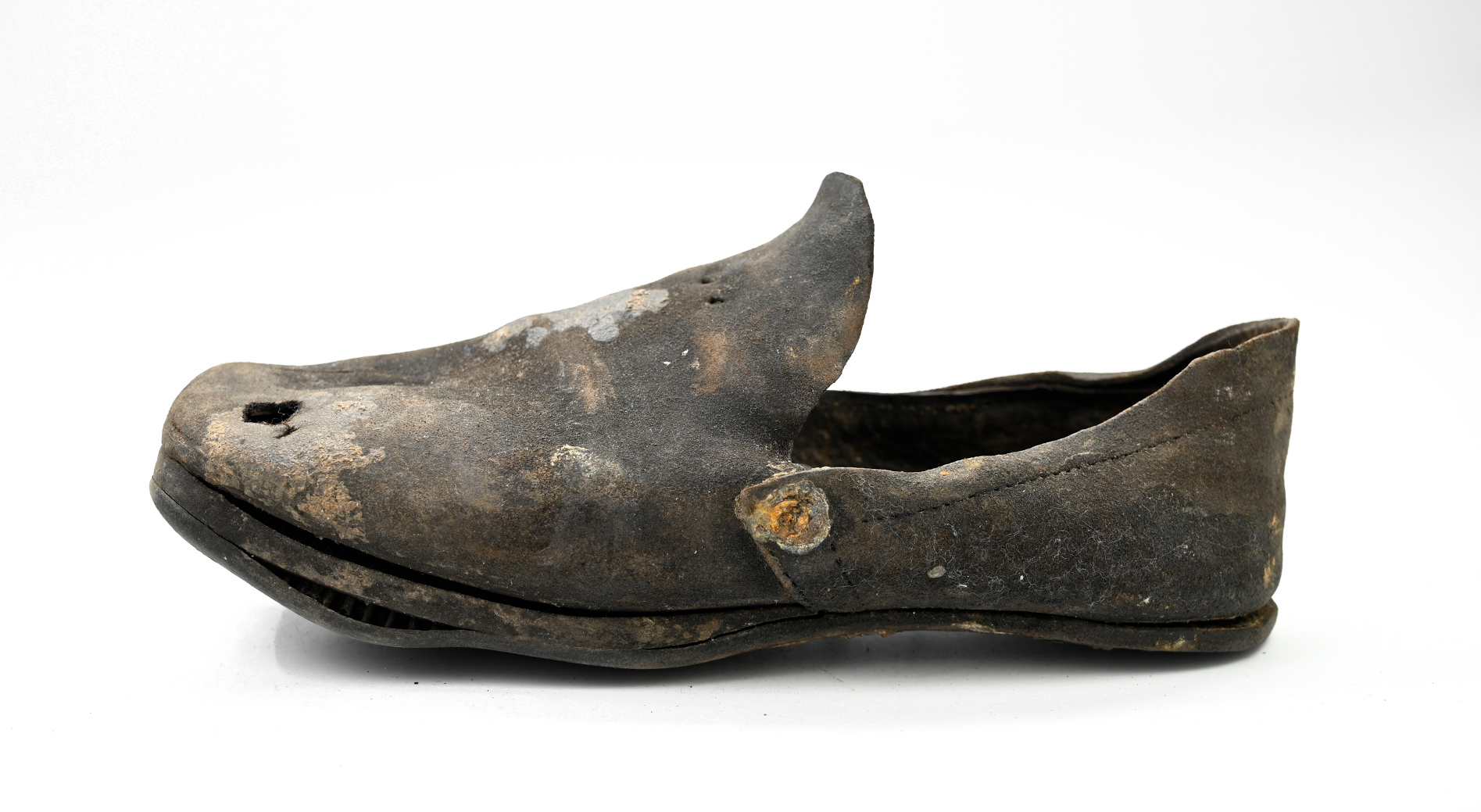
Hover to zoom

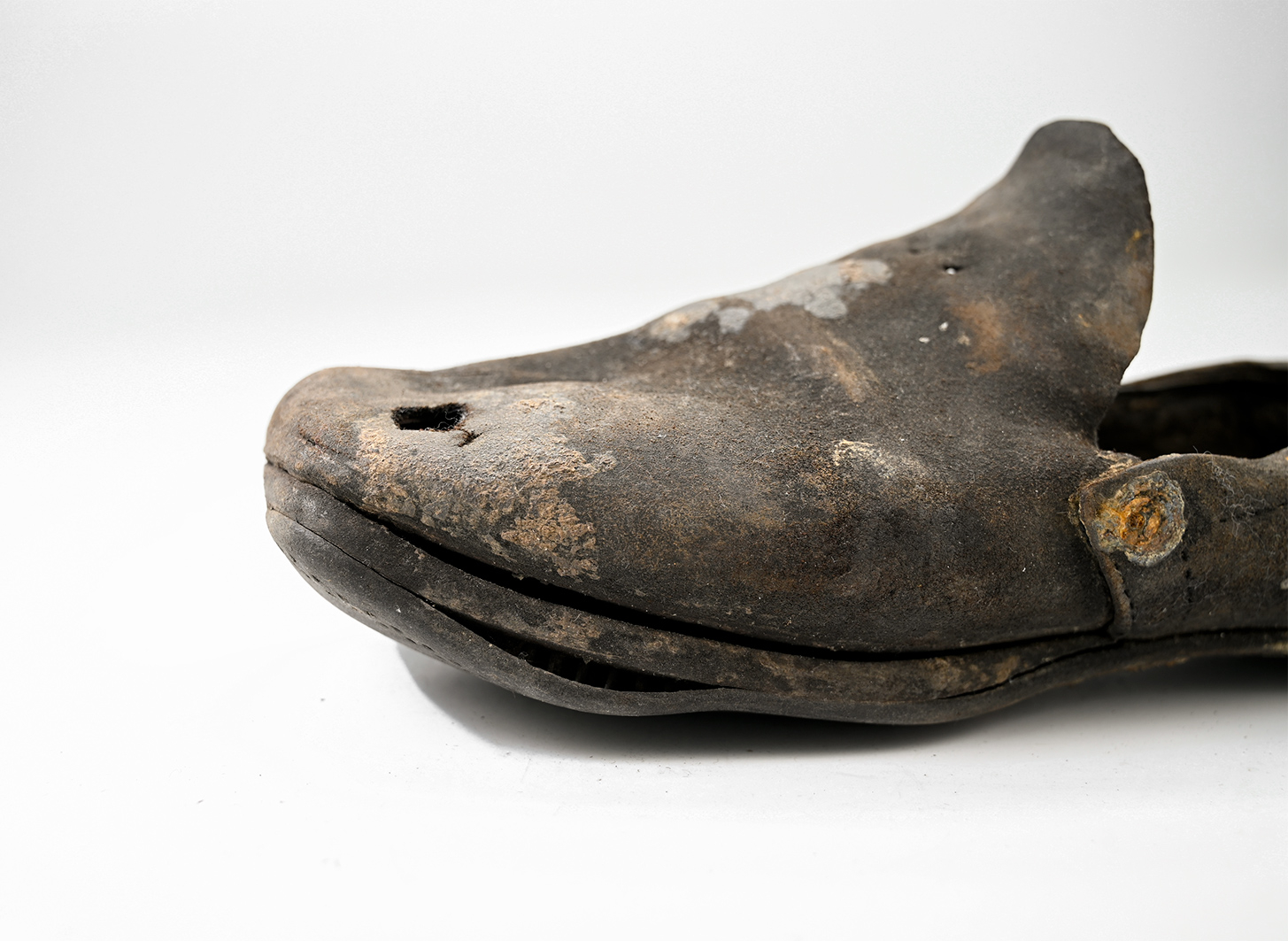
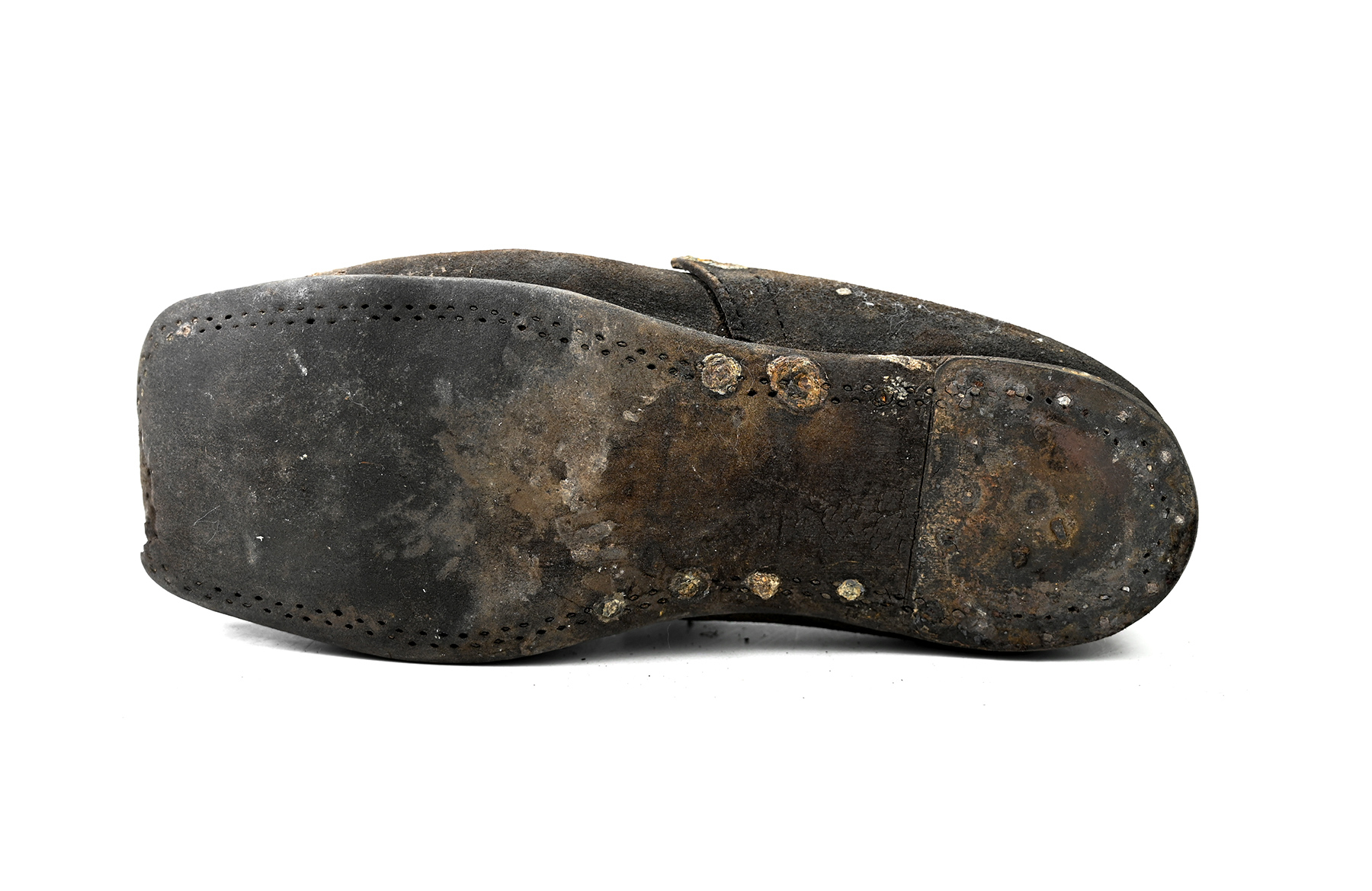
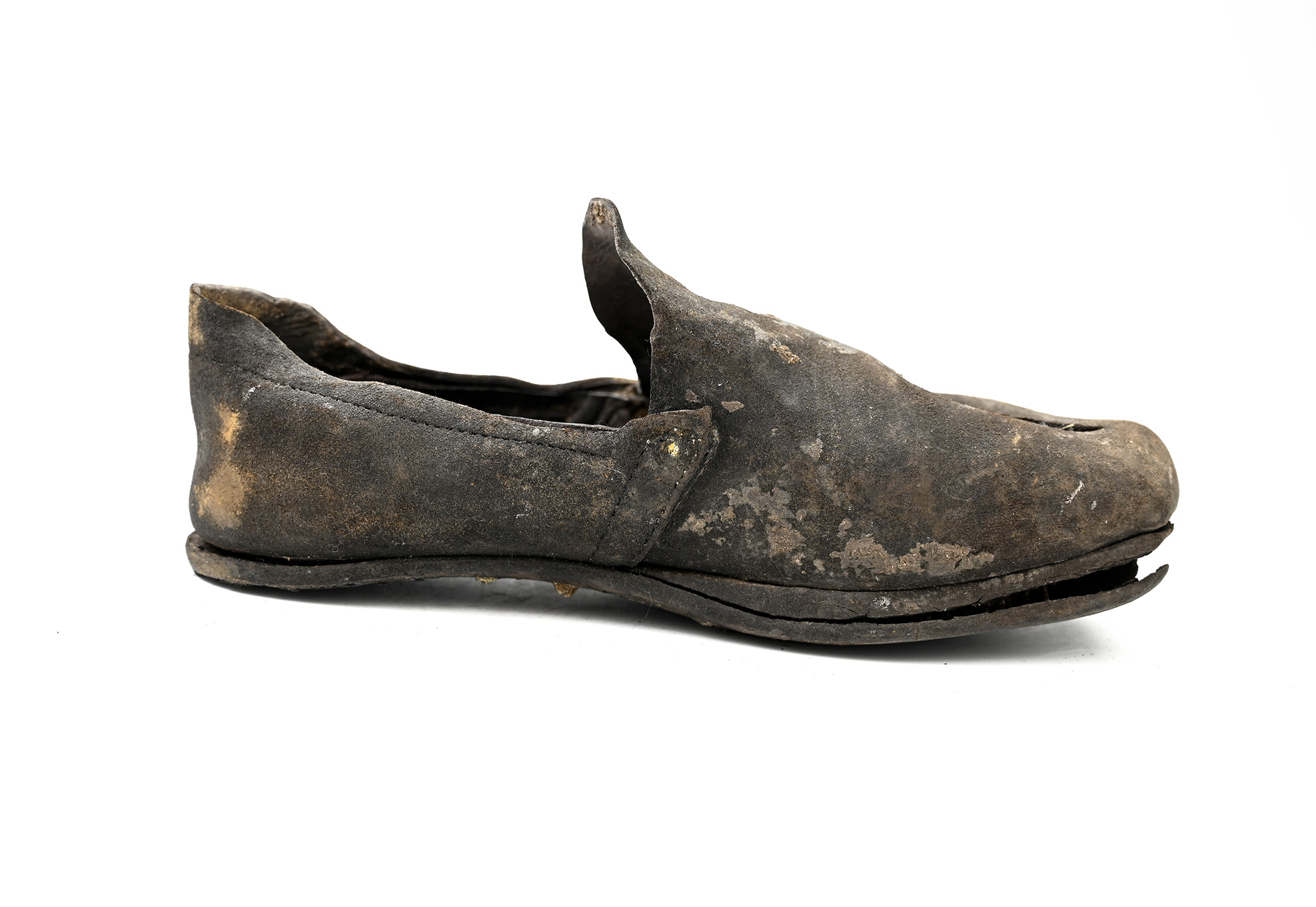
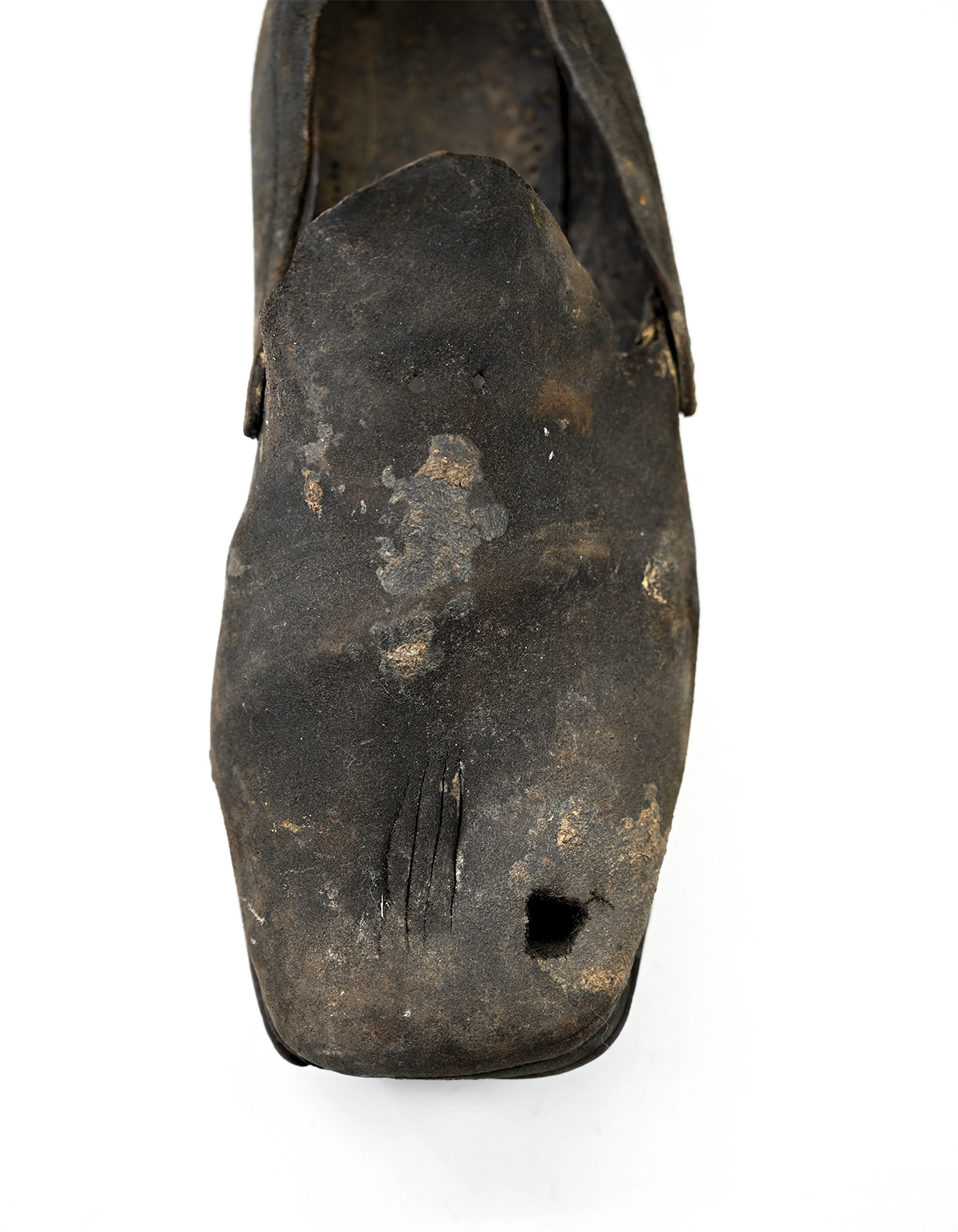
$695.00
Quantity Available: 1
Item Code: 1052-287
Shipping: Determined by Method & Location of buyer
To Order:
Call 717-334-0347,
Fax 717-334-5016, or E-mail
This Civil War army-issue shoe is in very good condition though excavated and easy to take for a barn or attic find. This was recovered at Fort Pembina, ND, a US army post established in 1870, where wet, anaerobic conditions have produced an array of discarded army issue leather gear and even cloth in remarkable condition, ranging from Civil War material like this that was issued to the troops well into the 1870s, to later patterns that made their way into the field as trial patterns or regular issue after the old stocks had begun to run out. This is good example of a typical Civil War issue brogan that was modified by a soldier for barracks or off-duty use and then later discarded.
The shoe is typical Civil War construction using black leather, rough side out, with a sewn sole reinforced with rivets on the underside at the instep and a single rivet at either side on top to reinforce the stitching joining the vamp and quarters. For parallels see Peterkin Figs. 9 and 12 especially. The soldier essentially made a loafer out of it by cutting away the quarters (the rear of the shoe) just above the line of stitching holding the “counter” or interior heel reinforcement. He then trimmed the tongue, rounding it at the top. This did away with the lacing holes on the quarters, but preserved the two lace holes on the upper part of the vamp through which the lace would have passed.
Overall the leather is stiff, but solid, and shows as a brownish black with light gray stains.
There are four slits about 1” long cut lengthwise above the center of the toes, either for ventilation or to loosen the fit: similar modifications are seen on other Civil War shoes, most notably on those worn by one of the Confederate casualties at Gettysburg. A small hole on the left toe is likely from wear and a cause of it being discarded though 1” by ½” missing piece of the sole on the wearer’s right, might have been a bigger factor. The rest of the sole is very good, though the stitching is naturally gone and there is a small gap between it and the inner sole. The stacked leather layers of the heel are missing, but given its similarity to a modern loafer, the soldier may have removed them for comfort when altering it.
The Civil War pattern shoe with sewn or pegged soles was officially replaced by the 1872 pattern and 1876 pattern, with the most noticeable change being the use of brass-screwed soles, which were replaced by sewing again with the 1885 pattern. About 1879 the army also began to consider a post or garrison shoe that could be worn when not in the field or on campaign, something not formally adopted until 1885 as well. Loose interpretation of regulations led to a hodgepodge of footgear not only in the barracks but in the garrison, with complaints by officers eventually leading to the order to wear army issue footgear when “on duty.” For further information we recommend “The Army Shoe” by J.E. Tobey in the Columbia Rifles Research Compendium, as well as articles by Peterkin in the Company of Military Historians, Brinkerhoff’s Boots and Shoes of the Frontier Soldier, and McChristian’s excellent volumes on the postwar US army, whose dates we use for the formal adoption of some patterns.
This example comes from the excavations conducted on private property with the owner’s permission at Fort Pembina, ND. Situated in the Red River Valley in North Dakota near the Canadian border, the fort was established in 1870 and in operation until 1895. Trading posts existed earlier in the area as part of the fur trade, and the first U.S. military post there was temporary- manned by a detachment of Minnesota troops in 1863-1864 following the 1862 Sioux uprising. In March 1870 a new fort was established south of the Pembina River and about 200 yards west of the Red River, completed by July and named in honor of Gen. George H. Thomas. The name was changed to Fort Pembina in September and the initial garrison consisted of two companies of the 20th US Infantry. Their main duty was to provide security for settlers worried about Sioux returning south from Canada, but the troops were more occupied with escorting boundary surveys along the Canadian border and preventing Fenian raids heading north into Canada.
The fort included enlistedmen’s barracks, officers’ quarters, guard house, ordnance storehouse, company kitchen, root house, laundress’s quarters, quarters for civilian employees, hospital and hospital servant’s house, a barn for the “hospital cow,” quartermaster and commissary offices and storehouse, stables, wagon shed, etc. The garrison reached peak strength in 1878 af 200, but the average was about 125 enlisted men and 8 officers. An October 1885 return listed 97 men, 2 field pieces, 1 mountain howitzer, 100 rifles, 19 pistols, 23 mules, and 9 wagons. By 1890 the post had just 23 men, and after an 1895 fire destroyed some 19 buildings it was decided to abandon the fort rather than rebuild, the last detachment left in September. The property was turned over to the Interior Department and later sold in 1902.
Early army issue shoes of any sort are rare, being used up in service, worn out by veterans around the farm, or tossed out by descendants. As an parallel to the good condition of the material coming from this dig at a remote frontier army post we point to recent excavations at the Roman fort Vindolanda in Great Britain where similar soil conditions have produced leather gear in remarkable condition that is over 1,500 years old. [sr] [ph:m]
~~~~~~~~~~~~~~~~~~~~~~~~~~~~~~~~~~~
THIS ITEM, AS WITH ALL OTHER ITEMS AVAILABLE ON OUR WEB SITE,
MAY BE PURCHASED THROUGH OUR LAYAWAY PROGRAM.
CLICK HERE FOR OUR POLICIES AND TERMS.
THANK YOU!
Inquire About SCARCE CIVIL WAR ARMY ISSUE BROGAN ALTERED TO A BARRACKS SHOE AT FORT PEMBINA
Most Popular
Historical Firearms Stolen From The National Civil War Museum In Harrisburg, Pa »
Theft From Gravesite Of Gen. John Reynolds »
Selection Of Unframed Prints By Don Troiani »
Fine Condition Brass Infantry Bugle Insignia »
Large English Bowie Knife With Sheath 1870’S – 1880’S »
Imported (Clauberg) Us Model 1860 Light Cavalry Officer's Saber »
featured item
SILVERED PRESENTATION FIFE TO MARTIN MURPHY, 4th NEW YORK VOLUNTEERS, 17th NY VETERAN ZOUAVES, AND REGULAR ARMY
This elegant silvered fife, 15-1/4” long, bears a great presentation and was carried by a company musician with Civil War service in two New York regiments, one of them a zouave regiment, and substantial service in the regular army. He seems to… (1268-167). Learn More »


